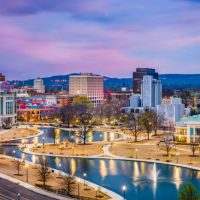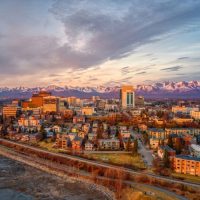Many people are packing up and heading westward to the Grand Canyon State to enjoy a warm climate filled with plenty of sunshine and affordable living in one of the most naturally beautiful states in America.
Arizona‘s landscape features vibrant colors that dance against the backdrops of all four US deserts, which include the Sonoran Desert, the Mojave Desert, the Chihuahuan Desert, and the Great Basin Desert.
Individuals, couples, and families with children considering moving to Arizona to experience its natural beauty, wade in the waters of the Colorado River, and look for some of the cheapest places to settle within the state – this is the guide for you!
Our guide to the cheapest places to live in Arizona includes some of the most affordable cities in the state by the cost of living.
Cost of living factors include housing costs, costs for utilities like natural gas electricity, water, and miscellaneous everyday costs like childcare, shopping, and entertainment.
Dive in to learn which Arizona cities offer low-cost living and attractive local amenities making long-time residents and newcomers proud to call the Grand Canyon State their home.
Contents
- 10 Cheapest Places to Live in Arizona
- Average Cost of Living in the United States
- Average Cost of Living in Arizona
- Arizona Safety Overview
- Frequently Asked Questions
- What Factors Contribute to the Low Cost of Living in Arizona’s Cheapest Cities?
- What Housing Options are Available in Arizona’s Cheapest Cities?
- What are Some of the Benefits of Living in Arizona?
- What Should I Know About Arizona Weather Before I Move There?
- What is the Crime Rate Like in Arizona’s Cheapest Cities?
10 Cheapest Places to Live in Arizona
Arizona ranks at number 37 out of all US states in terms of its cost of living.
Online cost of living reports show that Arizona locals pay an average of $44,875.00 to live in the state every year.
The bulk of costs included in this price includes housing rental, purchase, taxes, fees, and miscellaneous expenses like childcare and healthcare.
Residents living in and around major metropolitan areas like Phoenix and Scottsdale generally pay higher costs of living than homeowners in smaller towns and rural areas.
This guide provides information on some of the cheapest cities to live in Arizona based on local and national cost of living reports.
Cost of living figures include housing expenses like rents, mortgages, and homeowners insurance payments which account for the bulk of consumer spending in these areas.
Other costs included in this figure are for transportation, which can include owning a vehicle, gas costs, or maintaining a monthly pass for public transportation.
Childcare costs encompass a large part of the COLA figures for families with small children.
Other figures included in the national and local cost of living estimates include food, transportation, shopping, and miscellaneous expenses.
Average Cost of Living in the United States
According to data surveys from the US Census Bureau and America’s Bureau of Labor Statistics, the average American family spends just over $67,000.00 per year to live.
Most of these expenses are for housing, childcare, food, transportation, and healthcare.
Source: US Bureau of Labor Statistics
Average Cost of Living in Arizona
Online cost of living reports show that the average cost of living in Arizona falls around $45,000.00 which is substantially lower than the national average.
Arizona’s average cost of living includes annual monthly rent expenditures ranging from $973.00 to just over $2,100.00 per month.
Source: SoFi

1. Bullhead City
Bullhead City AZ homeowners enjoy waking up to the soothing sounds of the Colorado River and vibrant desert sunrises.
Renters and homeowners pay housing costs that are 4% lower than the national average and 20% lower than residents living in other cities.
The average monthly rent costs in this area are just over $1,100.00 per month which is well below national averages.
Bullhead residents pay lower costs on housing and everyday expenses like exploring the Black Mountains or taking a riverboat tour.
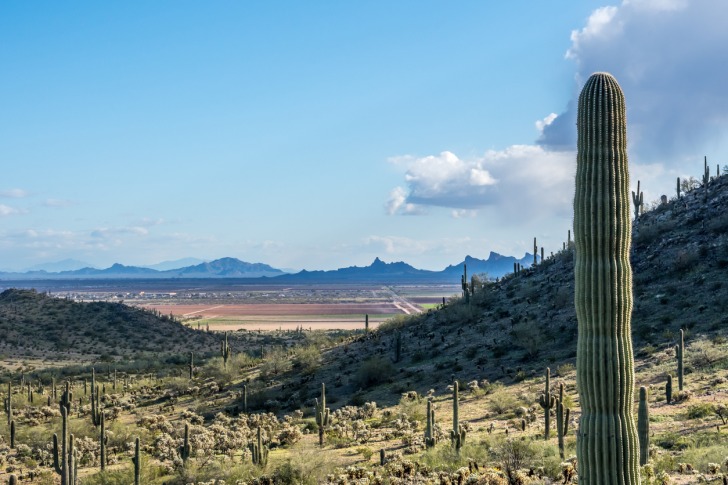
2. Casa Grande
The gentle hum of nearby farms fills the air in Casa Grande where Arizona locals experience a laid-back lifestyle.
This Pinal County desert city attracts newcomers to the city by offering affordable housing options that fall between 10-13% below the national average.
Renters and homeowners living in Casa Grande enjoy a family-oriented town with a small-town feel where they pay around 4% less for housing, utilities, and miscellaneous costs than their Arizona neighbors.
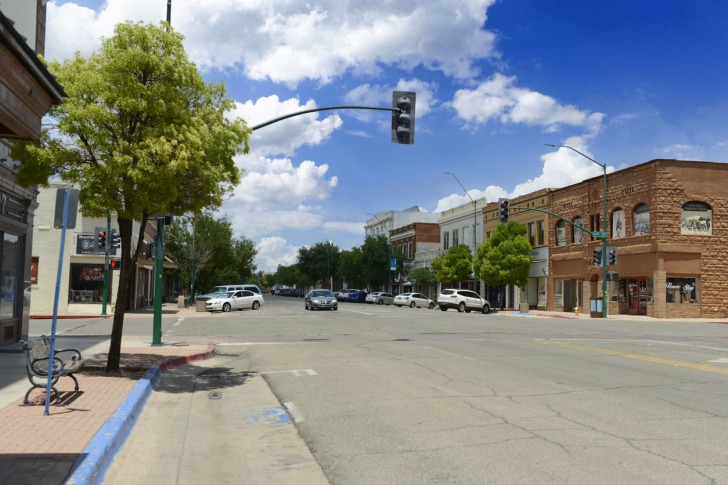
3. Douglas
Cost of living reports show that Douglas, Arizona in the Sonoran Desert is one of the most affordable cities.
New homeowners can buy a home here for just over $100,000.00.
Affordable housing options include new and historic homes abound in this Rio Grande border town.
National and local cost of living reports show that single adults can survive comfortably on an annual salary of $35,000 while covering all costs for housing and everyday needs.
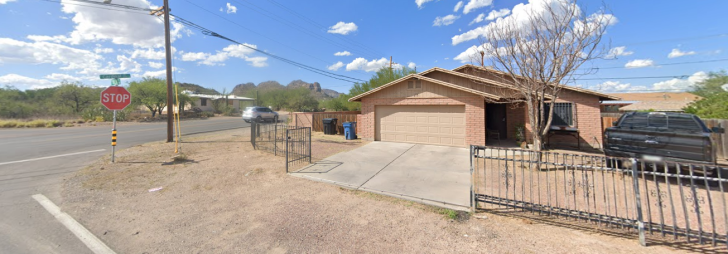
4. Drexel Heights
If you’re looking to settle down in an affordable Arizona town known for its quiet charm, consider Drexel Heights.
Apartment renters in Drexel Heights spend about $1,100.00 per month on rent.
They also pay 9% less than the national average for homes, transportation, groceries, healthcare services, and miscellaneous services in town.
Locals enjoy exploring exhibits at the Pima Air and Space Museum, splashing around with their kids at the local waterpark, and attending family-oriented events at the local community center.

5. Eloy
Eloy, Arizona makes the list of the most affordable places to live as the small city offers huge financial benefits for most homeowners and renters living here.
Online cost of living reports show that Eloy locals spend a total of just under $30,000.00 per year on living in this Arizona town.
While the cost for some goods and services is slightly higher, the savings benefits offset the higher prices of utilities and healthcare costs for most residents.
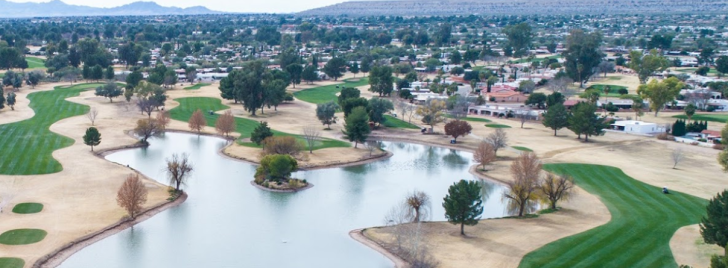
6. Green Valley
Green Valley is another low-cost Arizona town featuring stunning desert landscapes in the Santa Rita Mountains.
Just south of Tuscon, Green Valley is a picturesque town with landscaped streets and a buzzing community center where prices are low and spirits are high.
Grand Canyon State residents living in Green Valley pay less for housing, transportation, and healthcare.
They also have easy access to nearby attractions and historical sites like the Titan Missile Museum and the Tubac Presidio State Historic Park.
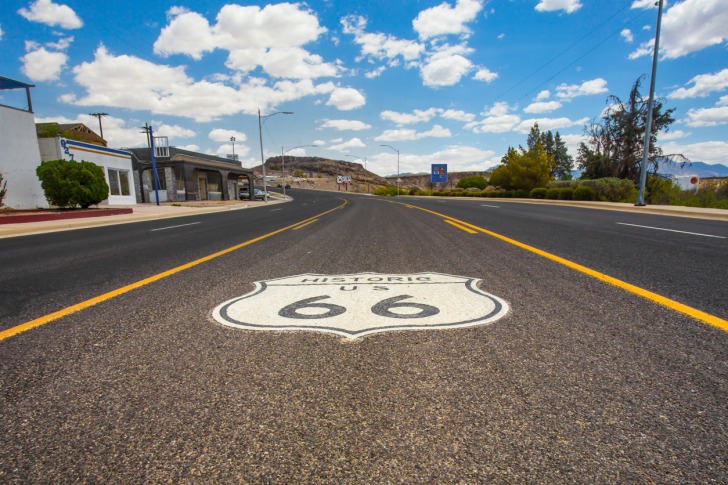
7. Kingman
Residents of Kingman experience the feeling of stepping back in time in this historical town where vintage cars cruise along Route 66.
This city offers locals a unique blend of nostalgia with hints of modern living.
Locals enjoy hiking and biking through canyons and fishing in the pristine waters of nearby lakes like Lake Mead and Lake Havasu.
Kingman Living saves renters between 9-13 % on housing costs.
The average rent costs in this Arizona town are below the national average at just over $1000.00 per month.

8. Rio Rico
Residents of Rio Rico wake up to the sounds of the Santa Cruz River flowing nearby.
Rio Rico offers desert dwellers a laid-back atmosphere with captivating landscapes.
This Arizona town offers affordable housing options and low-cost living.
Homebuyers seeking solace in Rio Rico can buy a home for less than $200,000.
Local homeowners also pay less for transportation, health care services, and miscellaneous expenses.
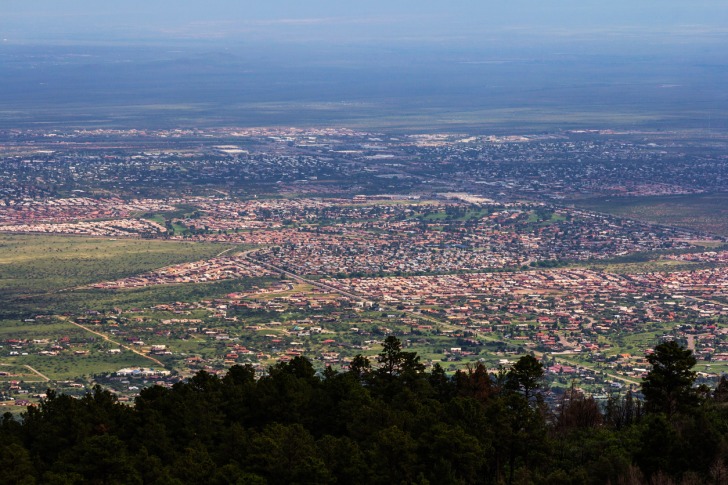
9. Sierra Vista
Sierra Vista AZ offers a natural cityscape with a backdrop of majestic mountain ranges filled with vibrant colors.
Housing costs in this community-oriented town known for its friendly neighbors trend lower than the national average.
Lower out-of-pocket costs allow Sierra Vista residents to save more of their hard-earned cash and contribute to a relatively stable quality of life.
Overall costs of living are almost 10% lower than the national average and the Arizona state average.
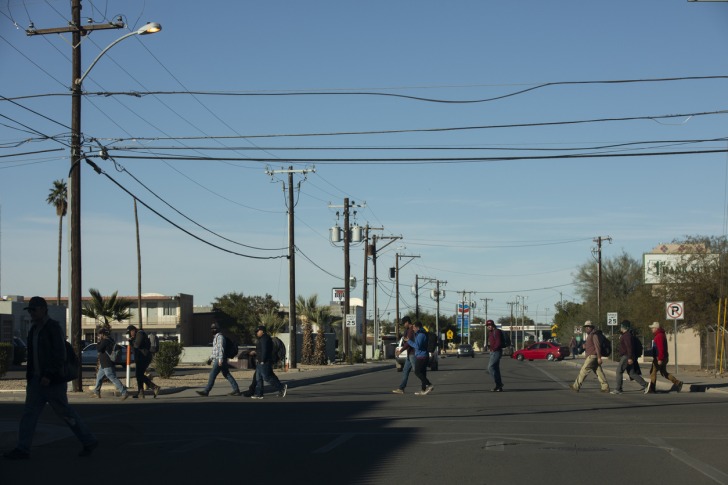
10. San Luis
San Luis is a Mexican border town known for its safety and affordability in Yuma County.
This city is filled with sun-drenched streets, colorful buildings, and a pleasant collision of cultures that fill the wafting air with the mouthwatering aroma of spicy foods being sold by local street vendors.
Although homeowners in the Sonoran Desert may pay slightly higher utility costs, the trade-off is worth it as the overall costs of living in San Luis are 14-26% cheaper than the national average.
Arizona Safety Overview
READ THE FULL REPORT: Arizona Safety Review
Safety Index:
- OVERALL RISK: LOW
- TRANSPORT & TAXIS RISK: LOW
- PICKPOCKETS RISK: MEDIUM
- NATURAL DISASTERS RISK: HIGH
- MUGGING RISK: MEDIUM
- TERRORISM RISK: LOW
- SCAMS RISK: LOW
- WOMEN TRAVELERS RISK: LOW
Frequently Asked Questions
What Factors Contribute to the Low Cost of Living in Arizona’s Cheapest Cities?
Arizona’s renters and homeowners pay lower costs for buying or renting a home.
This cost savings translates into more disposable income for paying for everyday expenses and utilities.
Paying lower costs for utilities, transportation, and other expenses are also contributing factors.
What Housing Options are Available in Arizona’s Cheapest Cities?
Arizona hopefuls can find a variety of different housing options that include apartments, duplexes, mobile homes, and manufactured homes.
A quick Google search can provide more details on available unit types.
What are Some of the Benefits of Living in Arizona?
Arizona has some of the most affordable housing options in the US.
The Grand Canyon State also has a delightfully sunny climate, allowing residents to enjoy their favorite outdoor activities year-round.
What Should I Know About Arizona Weather Before I Move There?
Arizona’s climate is hot and dry.
It has long hot summers where temperatures can climb into the early 100 degrees.
Temperatures can reach as high as 115 degrees during summer.
Some areas of the northern part of the state have cooler temps and a regular monsoon season.
What is the Crime Rate Like in Arizona’s Cheapest Cities?
Crime rates in Arizona’s cheapest cities often mirror those of local and national rates.
While some cities on the list may experience higher levels of violent or property crimes, many cities report local crime rates below the local and national averages.
It is important for potential renters and home buyers to research local crime rates by zip code and neighborhood to get a better perspective on criminal activity in your preferred neighborhood.


